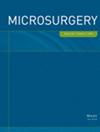Circumflex Scapular Artery Perforator Flap and Its Surgical Refinements in Soft Tissue Reconstruction for Various Regions of the Foot and Ankle in Pediatric Patients
Abstract
Introduction
Reconstruction for various regions of the foot and ankle in pediatric patients remains a challenging topic. This study presents the circumflex scapular artery perforator (CSAP) flap and its surgical refinements for addressing soft tissue defects in various regions of the foot and ankle in pediatrics.
Patients and Methods
Forty-seven patients underwent CSAP flap and its surgical refinements for the reconstruction of foot and ankle defects from 2010 to 2022. Mean age was 6.9 (range 2–14). Defects were observed in the ankle, dorsal foot, heel, and sole. The classic CSAP flap was used in 23 patients, and the CSAP flap with refined techniques was utilized in 24 patients, including double skin paddle, debulking, flow-through, and chimeric CSAP flaps.
Results
The size of the CSAP flaps ranged between 4.5 × 4 and 18 × 6.5 cm2. All flaps survived except for one case. The patient suffered total flap necrosis and was treated with a secondary reconstructive surgery. Primary closure of the donor site was achieved in all cases. The average follow-up period was 15.6 months. At the final follow-up, the mean AOFAS score was 93.6 (range 77–100). Mean VAS flap appearance score was 8.1 (range 6–10). Most patients showed satisfactory results.
Conclusion
The CSAP flap and its surgical refinements are alternative options for repairing pediatric foot and ankle defects, especially in cases involving large defects around the ankle joint, dorsal foot, and non-weight-bearing regions of the heel and sole.


 求助内容:
求助内容: 应助结果提醒方式:
应助结果提醒方式:


